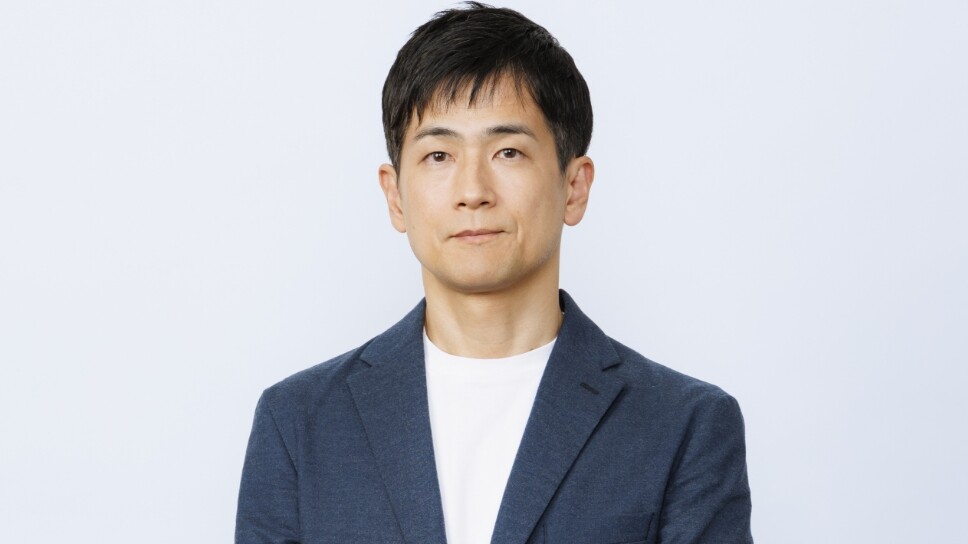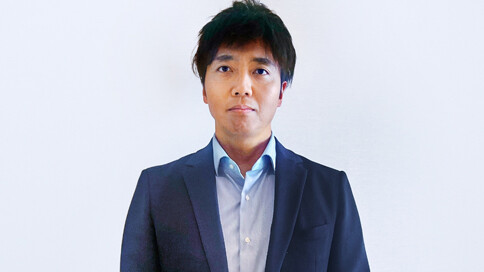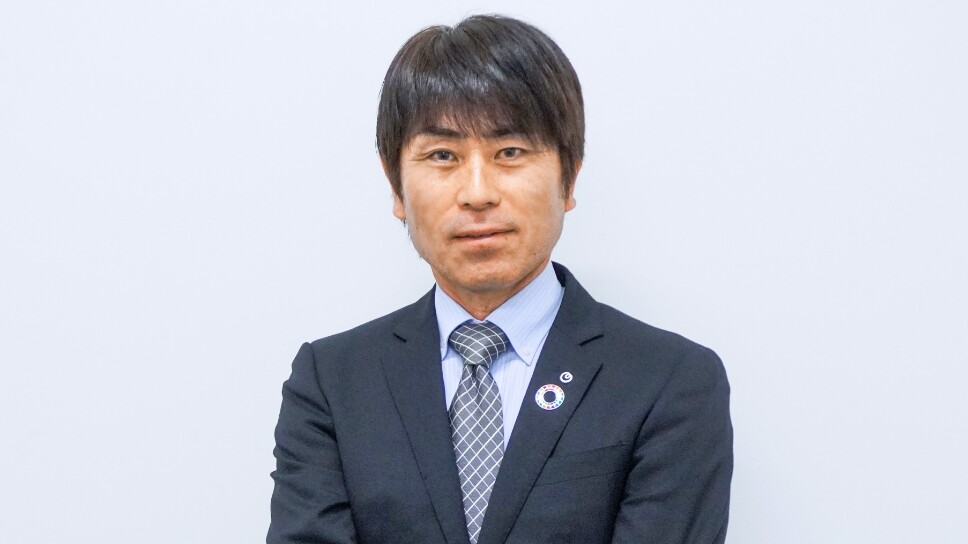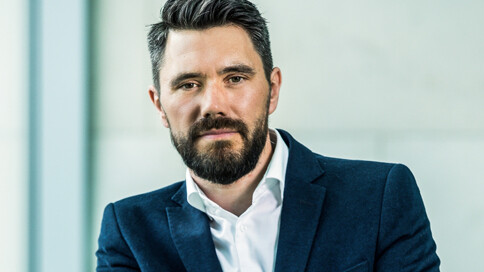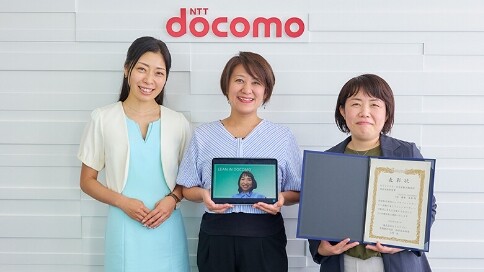Microsoft ends support for Internet Explorer on June 16, 2022.
We recommend using one of the browsers listed below.
- Microsoft Edge(Latest version)
- Mozilla Firefox(Latest version)
- Google Chrome(Latest version)
- Apple Safari(Latest version)
Please contact your browser provider for download and installation instructions.
NTT's Sustainability Efforts
Focusing the Group's strengths on the "Mountain of Treasure" in rural areas
NTT Urban Solutions (At the time of interview)
Sadayoshi Hirai

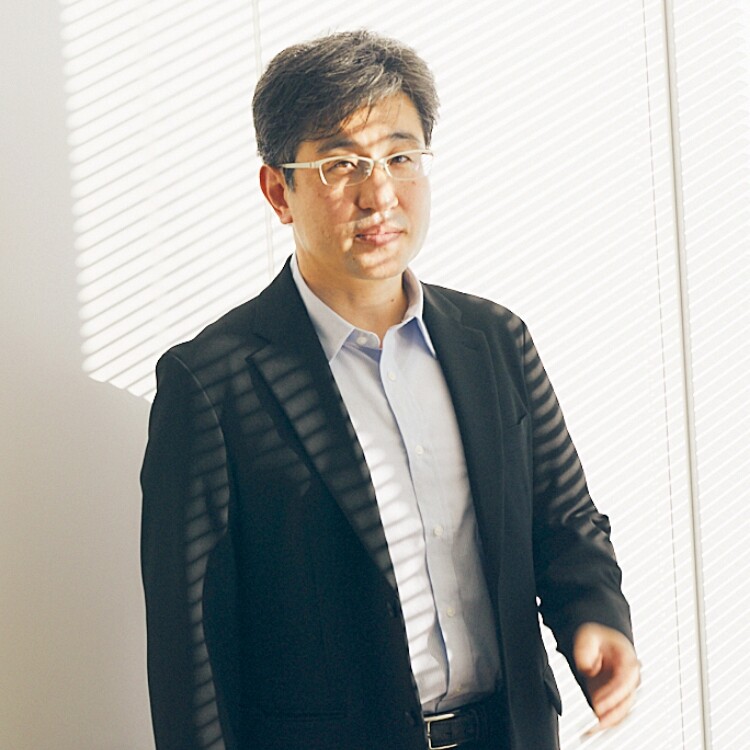
Distraught from hearing "We went out of business"
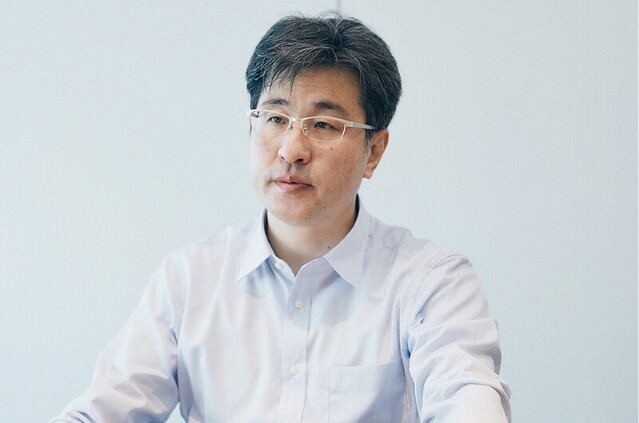
In October 2020, the Japanese government made its Carbon Neutrality Declaration, which aims to realize a decarbonized society and achieve net-zero greenhouse gas emissions by 2050.
The NTT Urban Solutions Group supports unique and vibrant urban development throughout Japan via value chains ranging from urban development consulting, real estate development, facility solutions, and property management and area management, with the aim of resolving various issues facing local communities, such as decarbonization and the utilization of renewable energy.
NTT Facilities, which plays an important role in this sector, utilizes the NTT Group's ICT, environment, and energy resources to their maximum potential, providing total support for the development of sustainable urban areas, from planning to design, construction, and maintenance, centered on architectural design and facility management & energy as the two main engineering fields.
Sadayoshi Hirai, who works double-hat positions at NTT Urban Solutions and NTT Facilities, is a certified class-1 architect and urban planning engineer. While working on architectural designs, he is also engaged in regional development and the launch of regional energy businesses.
"In the world of architecture, the focus tends to be on how buildings can contribute to society. However, after joining the NTT Group, I felt that I was able to have a broader view of architecture and urban and regional development, which includes things like energy and ICT." (comment from Sadayoshi Hirai also follows below)
Mr. Hirai currently goes back and forth between Tokyo and the Tohoku region. The project began due to consultations received from Ichinoseki City in Iwate Prefecture.
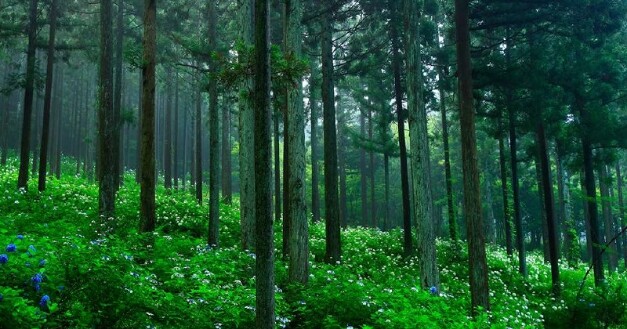 A forest in Ichinoseki
A forest in Ichinoseki
"There was a movement to bring the International Linear Collider, an international institute with state-of-the-art particle accelerators, to Japan, and Ichinoseki City was selected as one of the candidate sites. I was working as a member of the Urban Development Working Group of the Advanced Accelerator Association Promoting Science & Technology (AAA), which supports bringing the ILC to Japan, and we introduced the concept of 'GreenILC' aiming to achieve carbon neutrality for the ILC. For the ILC campus, we were considering themes including the use of wood and biomass and absorption of CO2 by forests, and it seems that this caught the attention of the people of Ichinoseki."
The city of Ichinoseki was selected as a biomass industrial city by the Japanese government in October 2016, and in February 2021 it declared its goal to achieve carbon neutrality by the year 2050.
In early 2021 Mr. Hirai made a proposal to Ichinoseki City including a roadmap to achieving carbon neutrality and consulting on planning projects for decarbonization of the region. In June of the same year, NTT Facilities signed a comprehensive partnership agreement with Ichinoseki City.
With the goal of achieving carbon neutrality, Ichinoseki City expressed its desire to proceed with a focus on effectively utilizing forest resources, including initiatives to use left over logging materials in forests for biomass, as these left overs present an issue for the city's biomass industrial city initiatives. However, as we proceeded with our efforts, various problems have emerged, including a decline in timber prices in Japan, a decrease in forestry workers due to an increase in imported timber, and a sharp increase in the amount of abandoned forests and forests of unknown ownership due to the devastation of planted forests. Japan's forests account for just under 70% of the country's land, half of which is planted forests, making it one of the world's foremost forest resource countries; despite this, forests and forestry have declined more than anticipated.
"We took a survey of the local forestry workers. Among the responses, there was one written in pencil with the words, 'We went out of business. Apologies for not being able to respond to your survey.' My chest tightened up when I read it. I realized that even now in this moment there are people who have no choice but to shutter their businesses."
There has been a sharp decline in sawmills in Ichinoseki City in the past decade or so.
 Timber yard at the Toban Wood Distribution Center in Ichinoseki City
Timber yard at the Toban Wood Distribution Center in Ichinoseki City
Abandoned forests and leftovers from logging are transformed to support the economy
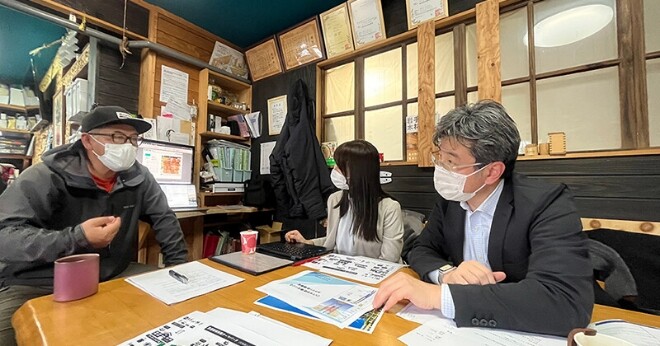
Carbon neutrality. The biomass industry. And, the revitalization of regional economies by regenerating forests and the forestry industry. Is it possible to resolve all of these challenges in one fell swoop? Mr. Hirai visits regions and companies throughout Japan who are engaged in advanced urban development and forestry efforts. During this process, he once again realized that for each project there were people who had an abundant love for their local region.
"The interesting thing about urban development is that in any region we were always able to meet ambitious business managers who have succeeded in their business, and through such people our circle of collaborators would widen. What I do is listen to various people's stories and make them into a single picture or concept. Then, once people have looked at it, I can receive assistance from people who empathize with the concept."
Mr. Hirai went to Ichinoseki City to talk to various stakeholders, including the forest owners' cooperative, lumber mills, lumber processing plants, and other local companies, to ascertain the current situation and issues.
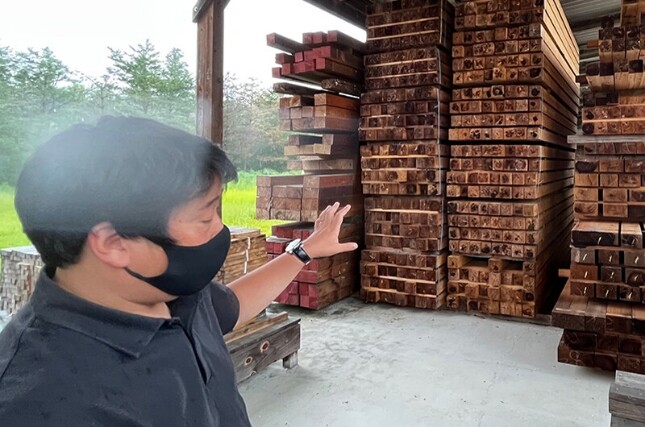
"This would not be resolved just by utilizing abandoned forests and left over materials from logging. We had to make separate efforts for the regeneration of forests and forestry in terms of upstream, midstream, and downstream areas with an overall view of the industry, get willing local foresters involved in advanced initiatives, and consider mechanisms to transform the forests of Ichinoseki City into 'economic forests' that would become economically sustainable assets..."
Thus, the "Forest Ecosystem" concept was born.
The Forest Ecosystem concept contributes to "forest development," which converts abandoned forests into "economic forests," the creation of a supply chain that improves the profitability of forestry processing and distribution, and, by providing forest services as a new form of value, the revitalization of forests and the forestry industry overall as well as the decarbonization of the region.
Forest development is an initiative which utilizes the resources and advanced technologies of the NTT Group and the NTT Urban Solutions Group; this initiatives aims to streamline the management of local companies involved in forests and forestry, as well as to enhance the added value of forests and forestry by implementing a carbon credit system by which credits are issued for reductions in CO2 and other emissions for decarbonization and can be exchanged with other companies, and the creation of a forest services industry* for working vacations, forest therapy, and other services in partnership with the tourism and health industries.
To realize the Forest Ecosystem concept, we divided the action plan into the following areas of forests and forestry: upstream (forest management and operations), midstream (timber processing and distribution), and downstream (demand destinations).
*Forest services industry: Proposed by the Forestry Agency's National Land Afforestation Promotion Organization in February 2019 as a means of creating new industries by utilizing forest space in diverse fields such as health, tourism, and education. Efforts to create new bonds between forests and people to revitalize mountain villages and expand "related populations."
In terms of upstream efforts, we organized the roles of local governments, the forest owners' cooperative, and forestry workers, and used advanced technologies such as drones, ICT and DX (forestry DX) to streamline the management and operations of forests based on the forest management plan. For midstream efforts, we created a comprehensive timber processing complex to supplement the supply chain, which was lacking in the region. This was positioned as a hub for the timber processing plants dotted throughout the region. Wood scraps and bark generated in the timber production process are made into wood chips for energy and supplied to the region. We plan to establish a new treatment plant for drying timber and wood chips, and waste heat from this will be used for decarbonization efforts.
In terms of downstream efforts, in order to expand demand for wood resources, we will build wooden buildings and install biomass power generation and heating systems that use wood chips to provide energy to a variety of locations including schools, the city hall, hospitals and nursing care facilities, agricultural houses, and sawmills.
Mr. Hirai says that if this plan is realized, based on simple calculations, it would enable the city to locally generate and decarbonize one-third of the energy consumed by the households in Ichinoseki, and would expand the economic scale of the city's forestry industry by over a billion yen.
"In the mountainous areas where few people live, trees tend to be cut down and left if the economic scale is small. However, forests, which make up over half of the land, are a 'mountain of treasure.'"

NTT's unique approach to regenerating forests and forestry
Currently, those involved are at a stage where they are gradually doing what they can to embody the "forest ecosystem" idea while gaining the understanding of local stakeholders. While some people agree with Mr. Hirai's plan, he says that he may not be able to gain understanding from others.
"Some people have told me that it's a 'pipe dream,' but I feel that unless someone presents a goal to aim for, nothing will happen. I listen sincerely to their criticism and opinions. Then, I look tenaciously for answers to the problems. Through this process, I hope that I'll meet more people who say 'let's do this together' at some point."
Mr. Hirai has opportunities to talk about the concept at seminars and other events, and has received consultations from other municipalities who say they want to discuss similar initiatives or are interested in using the heat from hot springs to dry wood. On such occasions, he says there is a question he is often asked.
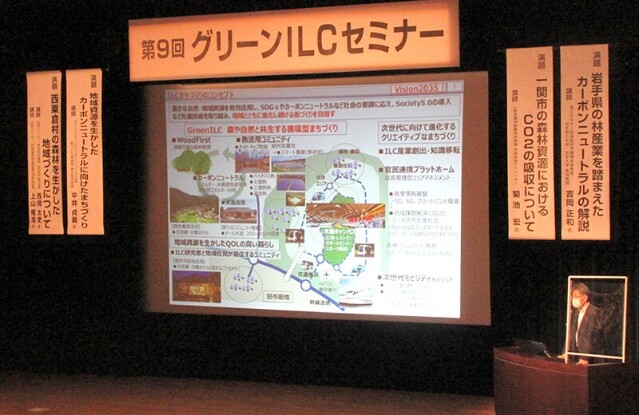 Mr. Hirai speaking at a seminar
Mr. Hirai speaking at a seminar
"I'm often asked, 'why is NTT involved in forestry?' I'm not surprised, because some people might think that there could be no relationship between a telecommunications company and forestry. But actually, the regeneration of forests and forestry is a major theme spanning various sectors. For example, if forestry-related data is digitally managed, the value of forests can be quantified and data-based forestry management can be performed. If open data is used, you may be joined by players with new ideas. I believe that this kind of transformation is something that only the NTT Group could achieve. Additionally, we are also working on designs for wooden buildings and biomass energy in Tomai City in Miyagi Prefecture, which is next to Ichinoseki City. This is within the scope of engineering provided by NTT Facilities, and in addition, it requires vertical integration of industry efforts to resolve forest and forestry challenges. The skills of developers and architects are effective for project management for such comprehensive solutions. Therefore, the NTT Group and NTT Urban Solutions Group should be able to leverage their strengths to resolve such issues."
The challenge of developing forests and regions in a sustainable way has only just begun.
Bringing the ideas of locals together into one.
For those who share a true passion for achievement
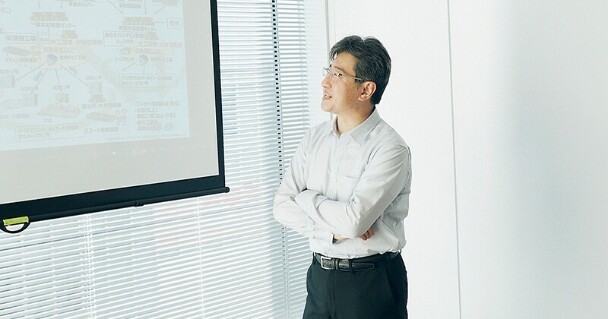
Mr. Hirai says that he "creates a single picture after listening to the various ideas of the locals." Perhaps because he presented a grand picture (in the form of a business concept), he was asked bluntly by the mayor, "what is it that you all want to do here?"
"I answered, 'We want to not only provide a concept, but create businesses that we can work on together with local people.' In order to solve problems, it's necessary to establish sustainable businesses, and not simply call it quits once the consulting is finished. They seemed convinced once we explained that we hope to nurture businesses together with the local community with added value that we can provide as NTT.
The other day, we had a meeting of people involved in forestry DX at the various NTT Group companies. We decided that we should all move forward along the same vector for our respective activities.
I merely create opportunities, and the enthusiasm of those gathered spreads and connects to those around us.
In this way, the people who endorse the idea of 'turning the forests to treasure,' are definitely 'We' for me. It takes time to earn the approval of local residents. But, there are already those who support my ideas. Together with these people, I hope to develop a 'mountain of treasure' in Ichinoseki City."
Sustainability
NTT STORY
WEB media that thinks about the future with NTT



